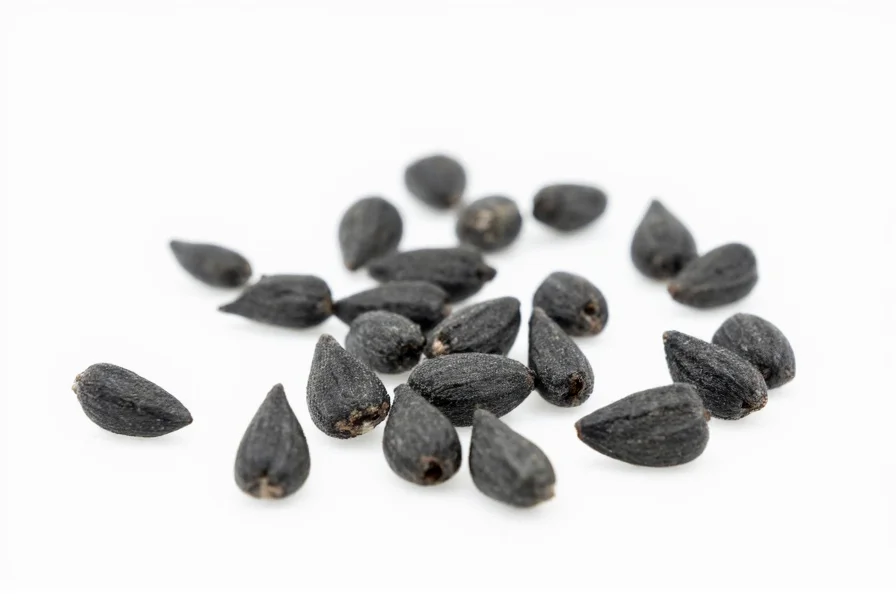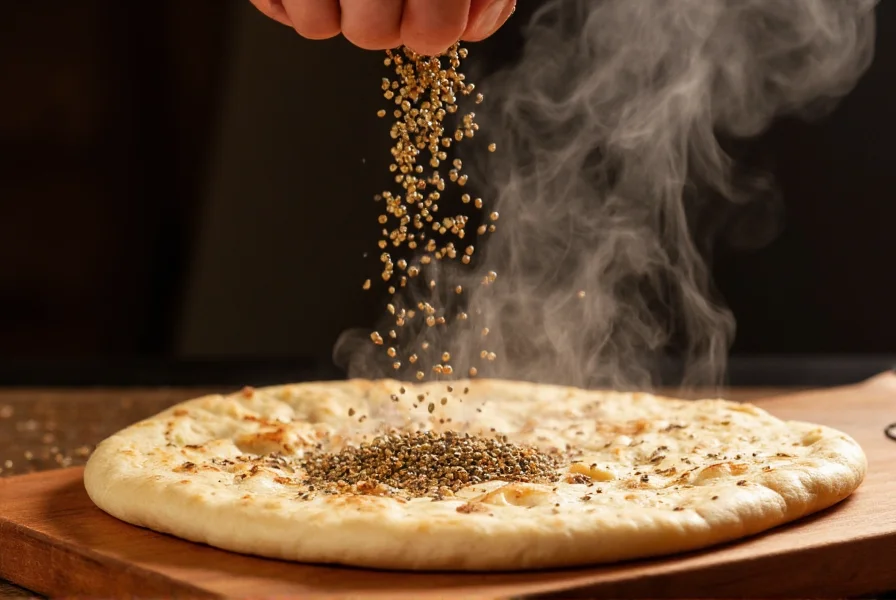Nigella seeds represent one of the world's oldest cultivated spices, with archaeological evidence showing their presence in ancient Egyptian sites, including Tutankhamun's tomb. These tiny black seeds, measuring just 2-3mm in length, have maintained their culinary and cultural significance across continents despite the passage of millennia.
Understanding Nigella Seeds: Beyond the Basics
When exploring what is nigella seeds, it's essential to distinguish them from similarly named spices. Despite being called "black cumin," they're botanically unrelated to regular cumin (Cuminum cyminum) or black sesame seeds. This common naming confusion often leads to substitution errors in recipes, significantly altering the intended flavor profile.
| Characteristic | Description |
|---|---|
| Scientific Name | Nigella sativa |
| Common Names | Kalonji, black cumin, black caraway, fennel flower |
| Flavor Profile | Earthy, slightly bitter, peppery with onion undertones |
| Appearance | Small, matte black, triangular seeds with a rough surface |
| Primary Growing Regions | India, Turkey, Syria, Eastern Europe |
Historical Significance and Global Journey
The historical footprint of nigella seeds reveals their importance across ancient civilizations. References to these seeds appear in De Materia Medica by Dioscorides (1st century CE), and they were mentioned in the Old Testament as a spice used for seasoning. In traditional Ayurvedic medicine, nigella seeds have been prescribed for respiratory conditions and digestive issues for centuries.
One fascinating aspect of what are nigella seeds used for historically is their dual purpose as both food and medicine. Ancient physicians like Hippocrates recommended them for headaches and intestinal disorders, while culinary traditions incorporated them into breads and curries. This dual functionality continues today, with modern research exploring their potential health benefits while chefs worldwide value their distinctive flavor.

Culinary Applications Across Cultures
Understanding how to use nigella seeds in cooking requires appreciation of their cultural context. In Indian cuisine, kalonji seeds are typically tempered in hot oil at the beginning of cooking to release their aroma, forming the flavor base for many curries and dals. Bengali cuisine features them prominently in vegetable dishes like shukto, while in Middle Eastern cooking, they're sprinkled on flatbreads like naan and lavash.
The distinctive flavor profile makes nigella seeds particularly valuable in vegetarian cooking, where they provide depth that might otherwise come from meat-based ingredients. When exploring nigella seeds benefits in culinary contexts, their ability to enhance other flavors without overwhelming a dish stands out. Professional chefs often describe them as "the secret ingredient" that elevates simple preparations.
Nutritional Profile and Research Insights
When examining nigella sativa seeds nutrition, these tiny seeds pack impressive nutritional density. Per 100g, they contain approximately 375 calories, 22g protein, 38g fat (primarily unsaturated), and 39g carbohydrates. They're particularly rich in thymoquinone, the compound responsible for many of their studied health properties.
Current research on nigella seeds focuses on several promising areas, though it's important to note that most studies use concentrated extracts rather than culinary quantities. Understanding nigella seeds benefits from a scientific perspective reveals potential anti-inflammatory and antioxidant properties, though more human clinical trials are needed to confirm many traditional claims.

Practical Guidance for Home Cooks
For those wondering where to buy nigella seeds, they're increasingly available in well-stocked supermarkets, ethnic grocery stores (particularly Indian and Middle Eastern markets), and online retailers. When purchasing, look for seeds that are uniformly black with no signs of moisture or clumping, which indicates freshness.
Proper storage significantly affects their shelf life and flavor retention. Store nigella seeds in an airtight container away from light and heat. When stored correctly, they maintain optimal flavor for 1-2 years. For maximum flavor impact, many chefs recommend dry-roasting nigella seeds briefly before use, which enhances their aromatic compounds without burning their delicate oils.
Safety Considerations and Usage Guidelines
While culinary use of nigella seeds is generally recognized as safe, understanding appropriate quantities is essential. The typical culinary dose ranges from 1/4 to 1 teaspoon per serving. Those exploring nigella seeds benefits through supplementation should consult healthcare providers, as concentrated forms may interact with certain medications.
Pregnant women should exercise caution with nigella seeds, as high medicinal doses have been associated with uterine stimulation in traditional medicine systems. For culinary use in normal food quantities, however, they're considered safe during pregnancy. As with any new food introduction, those with seed allergies should proceed cautiously when trying nigella seeds for the first time.
Common Misconceptions Clarified
One of the most persistent confusions involves difference between nigella seeds and black sesame. While both are small black seeds, they differ significantly: nigella seeds have a rough, matte surface and triangular shape, while black sesame seeds are smooth, oval, and shinier. Flavor-wise, nigella offers earthy, peppery notes, whereas black sesame delivers nutty, sweeter flavors.
Another common mix-up occurs with kalonji seeds vs nigella seeds—these are actually the same seed, with "kalonji" being the Hindi/Urdu name. This linguistic distinction often causes confusion among home cooks trying to follow international recipes.
Integrating Nigella Seeds Into Your Kitchen
For beginners exploring what is nigella seeds practically, start with simple applications. Sprinkle them over roasted vegetables during the last five minutes of cooking, incorporate them into homemade flatbreads, or add to lentil dishes for depth. Their flavor complements dairy products particularly well, making them excellent in raita or yogurt-based dips.
When experimenting with nigella seeds, remember that their flavor intensifies with cooking time. For subtle background notes, add them early in the cooking process; for more pronounced flavor, add them toward the end. This versatility explains why they've maintained their place in global pantries for thousands of years.
Are nigella seeds the same as black cumin?
Yes, nigella seeds are commonly called black cumin in many culinary contexts, though they're botanically unrelated to regular cumin (Cuminum cyminum). This naming convention causes frequent confusion, but in cooking terms, "black cumin" refers to nigella seeds.
Can I substitute nigella seeds with something else?
While no perfect substitute exists, a combination of equal parts cumin and poppy seeds can approximate nigella's flavor profile in a pinch. For traditional Indian recipes, black mustard seeds provide a somewhat similar pungency, though the flavor profile differs significantly.
Do nigella seeds need to be cooked before eating?
Nigella seeds are safe to eat raw, but their flavor develops best when heated. Most culinary traditions toast or temper them in hot oil before incorporating into dishes. This process releases their essential oils and enhances their complex flavor profile without requiring full cooking.
What's the difference between nigella seeds and onion seeds?
Nigella seeds are sometimes called "onion seeds" due to their mild onion-like flavor, but they're not related to onions. True onion seeds come from the Allium cepa plant and look completely different—smaller, blacker, and more rounded. This misnomer causes frequent confusion in recipe interpretation.
How should I store nigella seeds to maintain freshness?
Store nigella seeds in an airtight container away from light, heat, and moisture. A cool, dark pantry works well for short-term storage (6-12 months), while the refrigerator extends their shelf life to 1-2 years. Properly stored seeds maintain their distinctive aroma and flavor profile much longer than those exposed to environmental factors.










 浙公网安备
33010002000092号
浙公网安备
33010002000092号 浙B2-20120091-4
浙B2-20120091-4